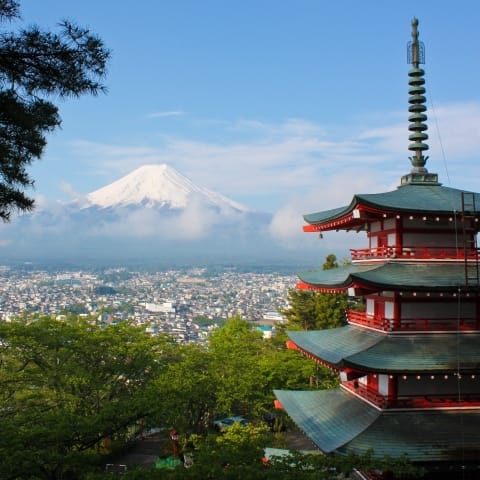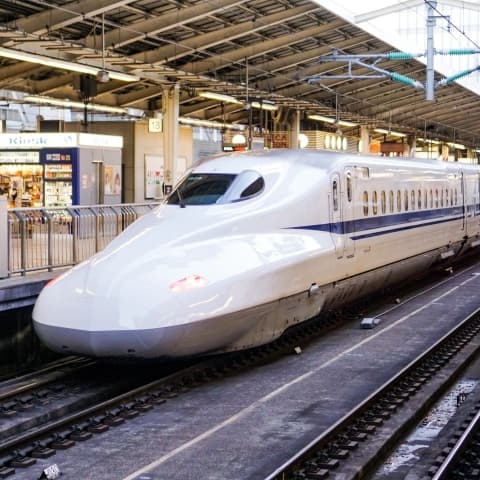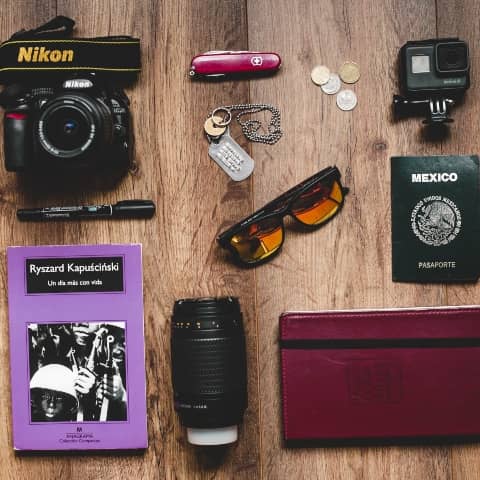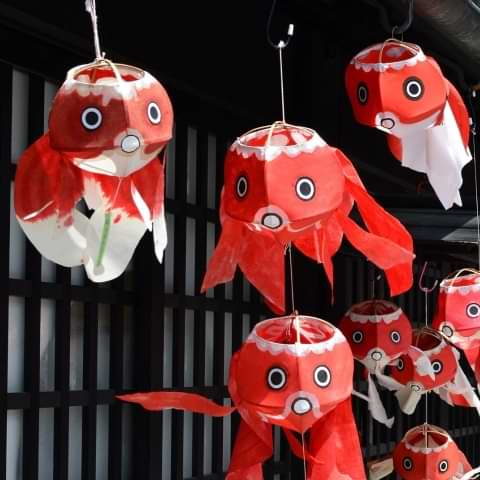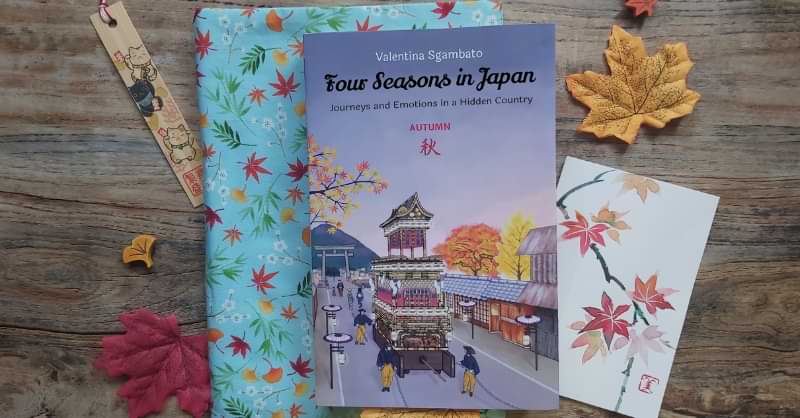Tōkyō 3 Days Itinerary
This 3 days Tōkyō itinerary is part of our Japan 10 days itinerary, so if you have already read the first 7 days you can continue your reading from this point.
If you need suggestions on luggage management during the travel, how to book the hotels or flights, pocket Wi-Fi or travel health insurance, give a look to our itinerary page.
As a general recommendation, we always advise booking hotels near the main train stations through Trip.com or Expedia.com*, but if you have any other questions, feel free to contact us.
3 days in Tōkyō: travel essentials
- Tōkyō Subway Ticket for 3 days
- Pocket Wi-Fi (with Onigiro you’ll have a 20% discount on Ninja Wi-fi*)
- Your valid passport
- Visa (required from some countries)
- Travel health insurance (optional, to be foresight)
- Free Japan Official Travel App on your smartphone
The cheapest way to use the underground railways is Tōkyō Subway Ticket for 3 days (~12 $). You can buy it at Tōkyō Metro Pass offices or at Tourist Information points inside the main subway stations.
For some extra suggestions on what to bring for your trip to Japan, give a look to our accurate list of travel essential gadgets.
Day 1 - Central Tōkyō Itinerary
9:00 ~ 11:00 Akihabara
Akihabara is famous as tech and pop culture district, with hundreds of shops selling action figures, videogames, tech-items and manga. In this area, between neon signs, it will be easy to get lost among dozens of young people struggling between manga and anime shops, arcade games and maid cafés.
Take subway to reach Akihabara station. Once there, follow directions for A3 Exit to start the tour of this electronics district, where huge buildings sell the latest computers, mobile phones and cameras available on the market.
We recommend a visit to Yodobashi Camera, in front of the station, where you can spend hours through more than 6 floors of merchandise. This building has also lanes dedicated to professional drawing materials and travel accessories, with prices that can be very affordable with tax-free shopping.
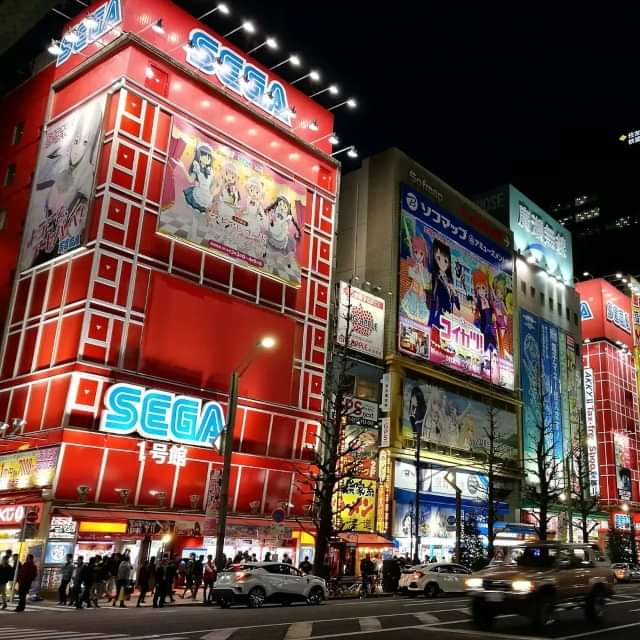
Continuing the tour on the north-west side of Akihabara, you can also venture inside other famous electronics stores that offer tax-free shopping, like Bic Camera and Sofmap, or you can save more money looking for some used electronics at Don Quijote.
Talking about manga and anime culture, Mandarake is one of the biggest stores, flanked by a store specialized on retro-gaming, Super Potato. If you want to play some arcade videogames, there are different buildings like the TAITO Station.
Lastly, this area features many maid cafés: prices are higher than a regular coffee, but the atmosphere is totally different and you’ll be welcomed by young waitresses dressed as French maids.
11:00 ~ 15:30 Imperial Palace
Since the Imperial Palace tours need reservation (otherwise you have to queue hours in advance because spots are limited, check it on official website) and usually starts around 13:00, let’s first head to one of the best spot to eat rāmen in Tōkyō, the Tōkyō Rāmen Street.
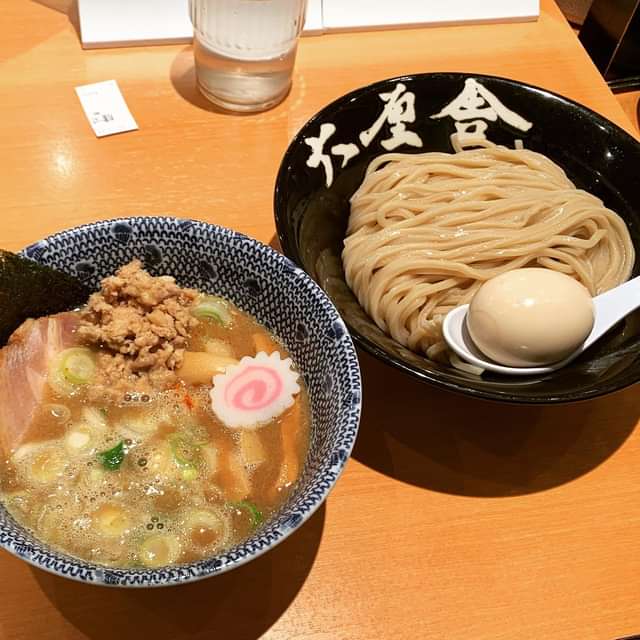
This area is a renowned strip of 8 neighboring noodle shops set in the underground precinct at Tōkyō Station. Each shop has some unique characteristic, like different broths, toppings or homemade noodles recipe, so you could wander there for a week and never run out of options!
To reach Tōkyō Station, take the subway Yamanote Line at Akihabara station and get off at the second stop.
After lunch, walk for 1,5 km to reach the Kikyō-mon Gate, the start of the Imperial Palace Guided Tour. Remember to make a reservation weeks ahead and to go there on time because Japanese are very precise and does not allow delays.
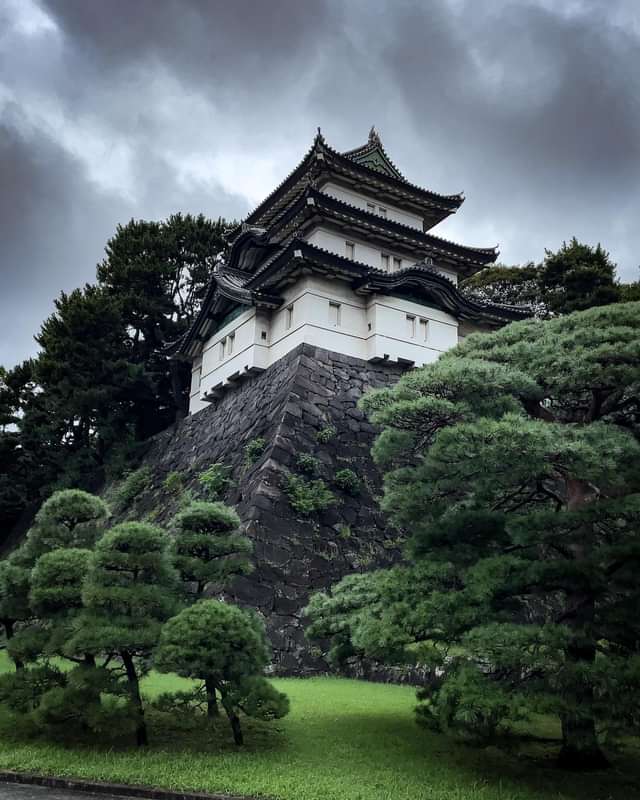
The tour lasts 1,5 hours, so if you want you can also visit the freely accessible Imperial Palace East Gardens before moving to the next destination. Here’s a map of all the Imperial Palace points of interests.
15:30 ~ 17:30 Zōjō-ji & Tōkyō Tower
Back to the metro, take the Mita Line from Ōtemachi station to Onarimon station (get off at third stop) to visit one of the most important Buddhist temples in Tōkyō, the Zōjō-ji temple, that closes at 17:00 with no admission costs.
Behind the temple you can already see the famous Tōkyō Tower, that becomes amazingly beautiful when the sun goes down thanks to its illuminations. You can get up on the tower until 22:00 and you can choose between the main deck at 150 m or the top deck at 250 m. For both it’s suggested a reservation on the official website.
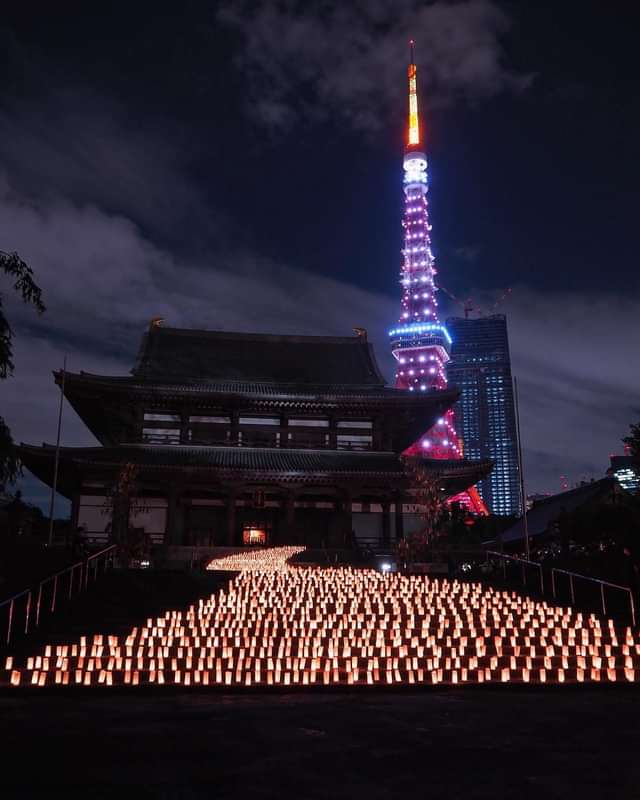
17:30 ~ 21:00 Roppongi
To reach Roppongi district, walk north for 1,5 km to take the metro Hibiya Line at Kamiyachō station to get off at Roppongi station (first stop). This is a lively entertainment area with hundreds of restaurants and shops to choose from, where locals and tourists mix in buzzing late-night bars and clubs.
The heart of the district is the vast Roppongi Hills, a massive development project by tycoon Minoru Mori, full of skyscrapers, observation decks, designer fashion boutiques and the Mori Art Museum, a museum with rotating exhibitions of international contemporary art.
Finally, the Tōkyō City View observatory offers a breathtaking view of the city, in particular at night with the Tōkyō Tower shining between city’s tall buildings. Get the tickets for the observatory and the Mori Art Museum at the official website.
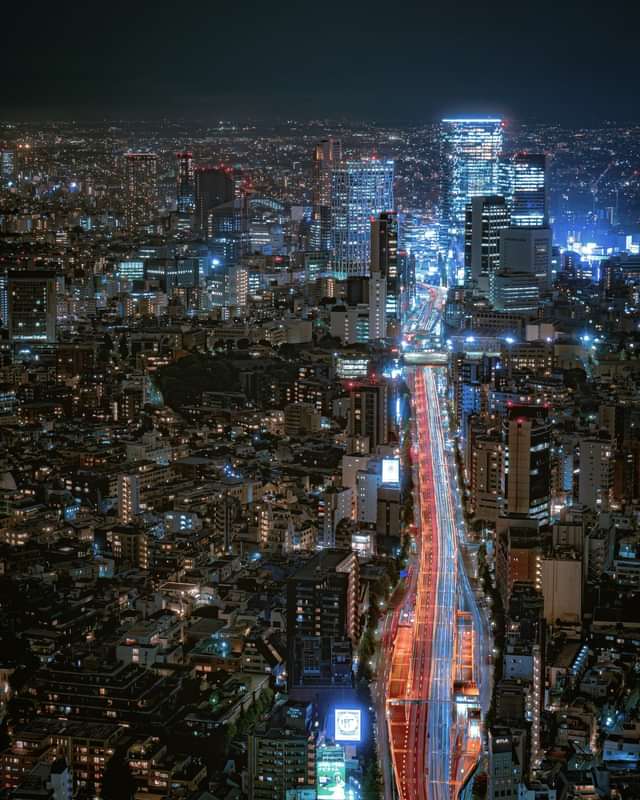
Day 2 - West Tōkyō Itinerary
9:00 ~ 13:00 Shibuya
Let’s start today from Shibuya, one of the most busy and dynamic areas of Tōkyō. Once at Shibuya Station, follow A8 exit directions and reach the statue of Hachikō. Take a picture of the most faithful dog in the world, in the middle of whose legs often doze a cat that recently became Hachikō’s best friend.
Then, let yourself be carried away by crowds inside the world’s largest pedestrian crossing, surrounded by gigantic promotional screens all around. If you want to, have a breakfast or a coffee break at Starbucks Tsutaya, from which you can have a panoramic view over the intersection and its frenetic pace of people.
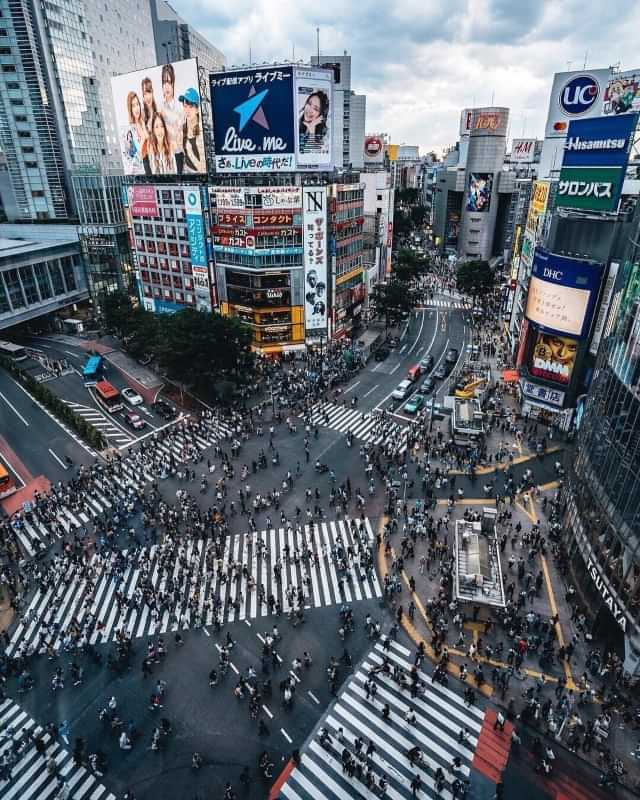
After this break, pass through the fantasizing arches of Center-gai Street, crowded with people, restaurants and shops. Here you can take famous Japanese-style funny pictures at Purikura-no-Mecca and have lunch along the way.
Walk across the elegant Bunkamura-dōri Street to reach Shibuya 109 Shopping Mall, between beautiful shop assistants and women’s clothes of all kinds. If you’re looking for menswear instead, return to subway station where Magnet by Shibuya 109 Shopping Mall offers several floors of men’s fashion and trendy gadgets.
13:00 ~ 16:00 Harajuku
Take the metro for one stop from Shibuya station to reach Harajuku, the area of excessive and youthful fashion, candy shops and cosplay. Just off the subway, dive into Takeshita-dōri Street, where large crowds gather during the weekend.
Since this district is famous for cosplay and candy shops, take a crepe stuffed with cream or a bubble tea at one of the many sweet kiosks. If that’s not enough, Totti Candy Factory will sell you the biggest rainbow cotton candy you’ve ever seen!
Continue your walk, but be careful not to get lost in the mysterious side alleys of extravagant Takeshita area. Once at the end of Takeshita-dōri, take the main road to reach Omotesandō Avenue where you can find one of our favorite gift shops, the Oriental Bazar, full of high-quality crafts, T-shirts and kimono.
Kiddy Land it’s also worth a visit, one of the city’s most famous toy shops where retro toys, trendy gadgets and modeling departments will make you lose your mind. Get a glimpse of beautiful Cat Street just before moving back toward Harajuku station, reaching a huge wooden torii gate, the southern access of Meiji-jingū Shrine.
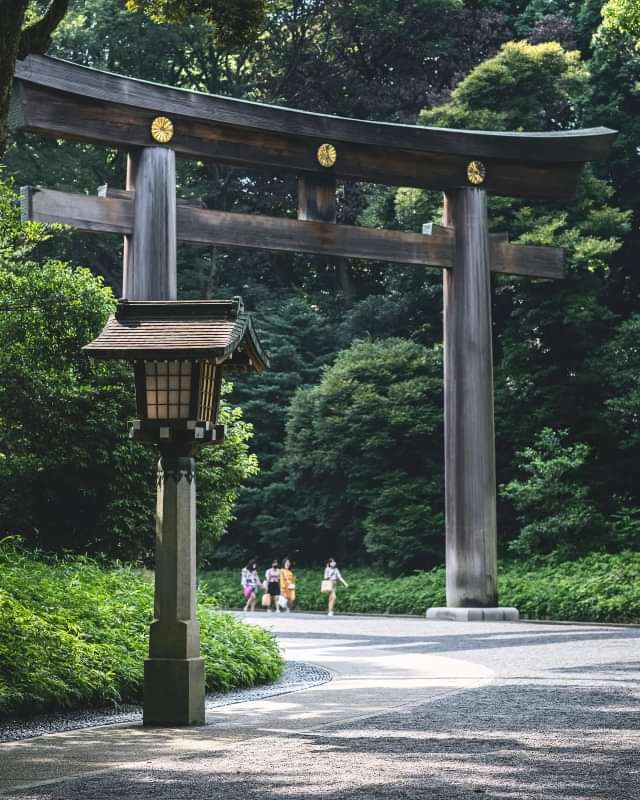
After passing the gate, dive between tall trees, where deafening singing of cicadas will greet you in summer. Follow directions to Meiji-jingū Shrine inside the park to take a rest from city’s frenzy life.
Inside the shrine’s area there are different smaller shrines and huge wooden torii gates, including the largest myojin-style torii in Japan, Ōtorii, standing at 12 m tall and 17.1 m wide. Once you’re done with walking along with Kami through nature, let’s get back to the metro station.
16:00 ~ 21:00 Shinjuku
Shinjuku is a futuristic neighborhood, among gleaming neon streets, huge buildings and its characteristic nightlife. From Harajuku station, take the subway for 2 stops and drop off at Shinjuku station. Once there, get to ground level using the station’s east exit and start strolling through this futuristic area.
The main attractions here are characteristic alleyways like Omoide-yokochō, narrow streets filled with izakaya where you can dine with ramen and beer at typical pubs. Then, continue your stroll to Kabuki-chō, the red-light district with its hectic nightlife lighted by huge skyscrapers, until you see a Godzilla Head popping up from the rooftops.
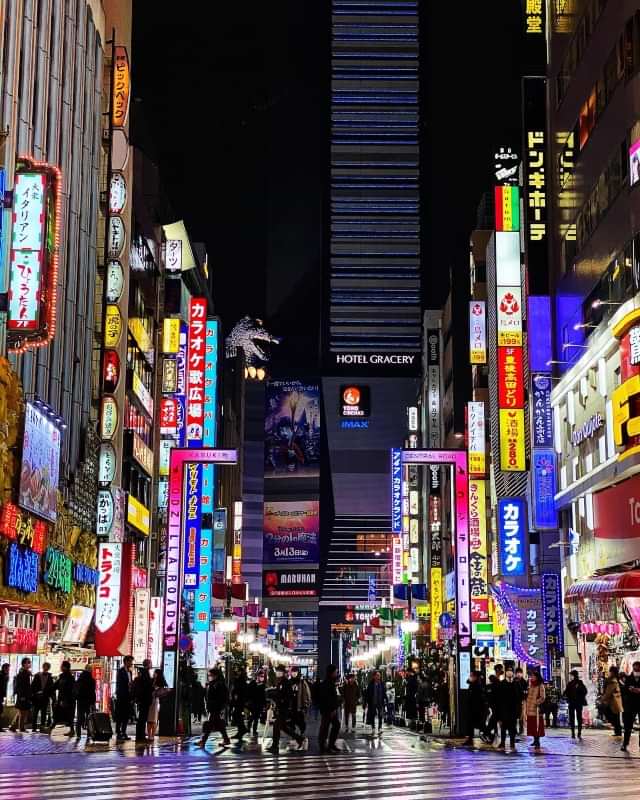
If you have time, inside Kabuki-chō district you can also visit the Samurai Museum, open until 21:00, or have one last stroll between the alleyways full of izakaya of Golden-gai Street.
If you’re looking for a panoramic view on Tōkyō at night instead, you should move back to the Shinjuku station and continue walking west to reach the Tōkyō Government Building, where you can freely access the southern tower’s 45F Observation Deck, open until 22:30: from there, you’ll either enjoy the panoramic sunset over Tōkyō and see Mount Fuji-san or, if you get there at night, have a nightscape of the city.
Day 3 - North Tōkyō Itinerary
9:00 ~ 13:30 Asakusa
Let’s start the last day of this Tōkyō 3 days itinerary with Asakusa, Tōkyō’s stunning historic district that preserves ancient Buddhist temples, Shinto shrines and a market reminiscent of Edo period.
Take Exit 1 to get out from the Asakusa subway station, head to the Culture Tourist Information Center to get a map of the area and climb to the top floor of the building for a panoramic view of Asakusa.
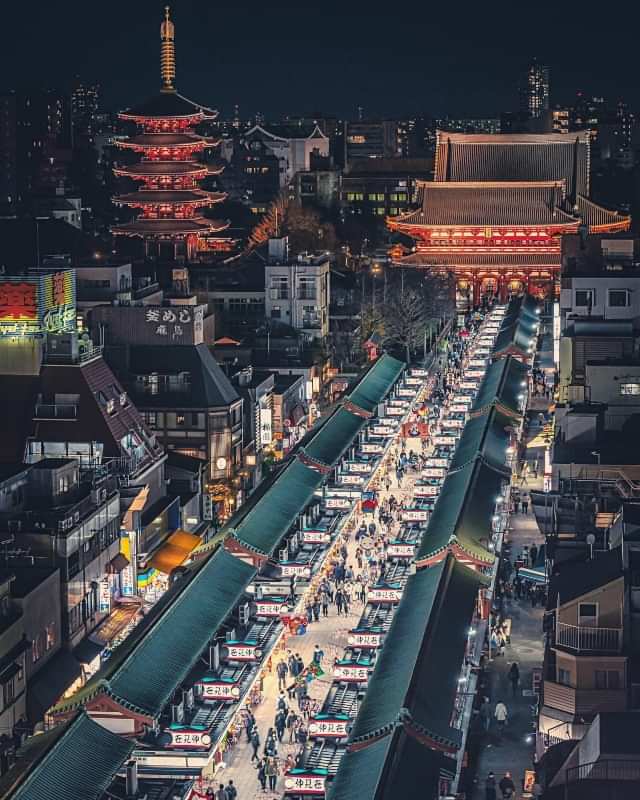
Back on the street, pass under the huge Kaminari-mon Gate to enter Nakamise-dōri Street, full of small shops and stalls resembling an ancient Tōkyō market.
If you want a sweet break, Kagetsudō Honten is in the nearby with its amazing meron pan, simple or filled with creams. Alternatively, you can try the original monaka wafer at Chōchin Monaka or one of Tōkyō’s oldest dorayaki at Kamejū confectionery store.
Back to the main attraction of the district, at the end of Nakamise-dōri Street you’ll reach Hōzōmon Gate and soon after the main building of Sensō-ji Temple: breathe incense in front of the temple and get a message of luck, the omikuji, from the boxes at the side, but tie your message somewhere if it’s not lucky enough!
This temple complex has also many other buildings as points of interest, like the Five Storied Pagoda, Asakusa-jinja Shrine and Denbō-in Temple with its garden.
Once finished the visit of the area, pass through Hoppii-dōri Street full of old-style craft shops. For a quick lunch you might try Daikokuya, but get there around 11:45 because its tenpura recipe is very famous! There are also other ancient restaurants in the area for lunch, a taste of the old Edo!
13:30 ~ 17:30 Kappabashi-dōgugai & Ueno-kōen
From Hoppii-dōri Street, head west walking for approximately 500 m to reach the Kappabashi-dōgugai Street, an area full of kitchen tools shops but also ceramics, noren and all sorts of kitchen themed items.
Probably the most iconic souvenir of this area are the resin reproductions of foods, very common to see outside restaurants because they do seem like real food: if you’ll bring one to your kitched addicted friend, he will surely appreciate the present, but be carefull because they can be pricy!
Then, we are going to the most famous park in Tōkyō, the Ueno-kōen, and to do that you can either keep walking west for 2 km or take a taxi for less then 8 minutes.
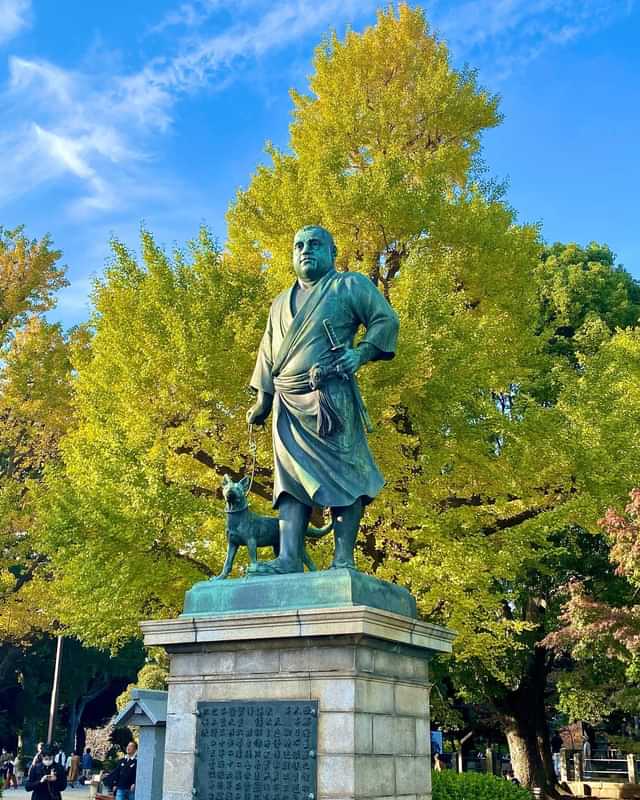
The park features many natural beauties throughout the year: from late March to early April, the park is coloured with sakura cherry trees; in June the hydrangeas around Shinobazu-no-ike Pond are in full bloom, while the lotus flowers will bloom in August inside the same pond; finally, starting from mid November the ginkgo trees will start to get their golden colors.
In the Ueno area there are also other famous points of interest, like the Ueno Zoological Garden, with the famous pandas, the Tōshō-gū Shrine, with its marvelous peonies that bloom in January-February and late April, and the Tōkyō National Museum with seasonal exibitions.
17:30 ~ 21:00 Tōkyō Skytree
During your stay in Tōkyō, at least one evening should be spent watching the beauty of the city from above, which at night becomes an endless carpet of lights and colors, and the elegant Tōkyō Skytree, with its 634 m height lighted with hundreds of pattern and colors, is probably the best choice ever.
With respect to the Tōkyō Tower, the higher Sky Tree offers a 360° view along with shopping experience inside the shops at its feet. From Ueno station, take Ginza Line for 5 stops to reach Asakusa station and there change for the Asakusa Line for 2 stops to reach Oshiage station.
Follow directions to Tōkyō Skytree exit to reach ground floor and begin your exploration inside this fresh looking Tōkyō Solamachi Mall: use this floor guide to search for your favorite shop or restaurant! Once you’re done with the shopping, it’s time to get over the clouds!
Step out onto Solamachi-hiroba Square to take pictures of the fully lit tower from below and then take escalators at Solami Zaka Square, that overlooks the main entrance of Tōkyō Skytree. Buy your ticket, take one of the four elevators and reach the panoramic deck at in just 50 seconds!
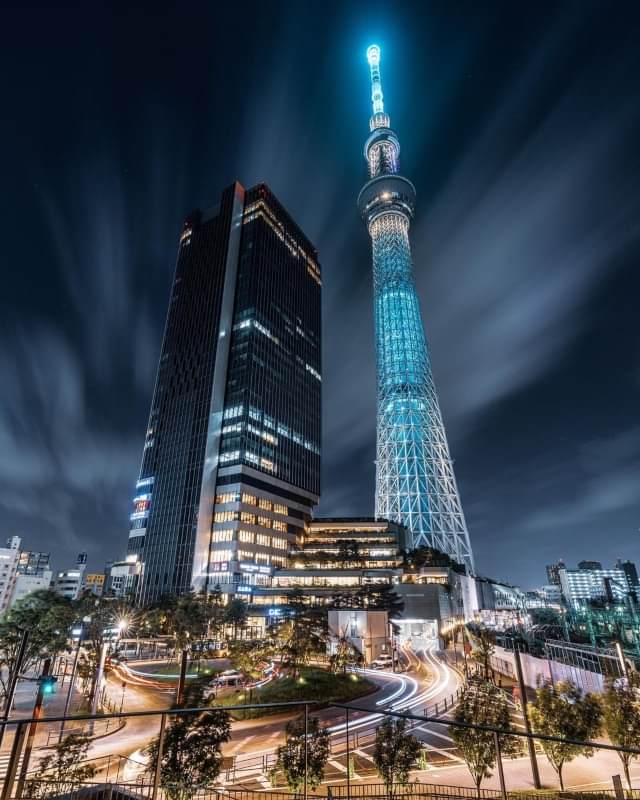
Here you can enjoy a breathtaking view of Tōkyō at night, from the Sumida-gawa River with its illuminated bridges to the bright Tōkyō Tower: the last entrance is at 21:00, but the tower will remain open until 22:00.
We suggest to buy the ticket for Tenbo Deck Floor at 350 m because the structure of the stained glass of this floor allows for a better view with respect to the higher observatory at 450 m.
Finally, you can dine at one of the many restaurants on the Solamachi’s dining floor, such as Rokurinsha which serves one of the best tsukemen in Tōkyō!
* As an affiliate of both Trip.com and Expedia.com, we receive a fee when you book a flight or hotel using our links.
FAQs
Here are the most frequently asked questions about traveling in Tōkyō (costs information are referred to pre-pandemic times and will be updated once the travel restrictions will be completely removed and situation will be back to normal).
From Narita you can take the Narita Express or the Keisei Dentestu Limited Express trains, both of which take about an hour to reach Tōkyō Station. From Haneda you can take the Tōkyō Monorail to arrive at Tōkyō’s Hamamatsuchō Station in 45 minutes.
Narita Express and Tōkyō Monorail are free with the Japan Rail Pass. Find out more
According to the economist‘s index of safest cities in the world, Tōkyō was found to be the safest city in the world for the years 2015, 2017 and 2019, followed by Singapore and Ōsaka.
The fastest railway connection is via the Shinkansen bullet trains of the Tōkaidō Line. The route is free with the Japan Rail Pass, otherwise the one-way ticket from Tōkyō to Kyōto costs € 120 and takes 2.5 hours.
To reach Ōsaka, the cost is almost identical but it takes 3 hours. Find out more
The most important thing to keep in mind when choosing a hotel in Tōkyō is the proximity to a metro station to facilitate travel around the city, while the best neighborhoods are Ueno, Akihabara, Shinjuku, Shibuya and Chiyoda.
Tōkyō has 13 metro lines, 9 of the Tōkyō Metro and 4 of the Toei, which connect over 270 subway stations in the city.
If you plan to take more than 10 subways each day, it is convenient to use the 24, 48 or 72 hour passes which cover all lines. These passes can be purchased at Tōkyō’s main airports and stations. Find out more
In Japan prepaid cards of the Pasmo and Suica brands are widely used, both to take the subways and to pay at vending machines.
Although these cards avoid continually calculating the costs of metro routes, if you plan to take many metro lines in a single day, it is more convenient to take a daily metro pass. Find out more
* as an affiliate of Trip.com, Expedia.com, Jrpass.com and Ninjawifi.com, we receive a small fee when you buy something on these websites using our links, obviously without any additional cost to you.
Share this blog post on your favorite social network


